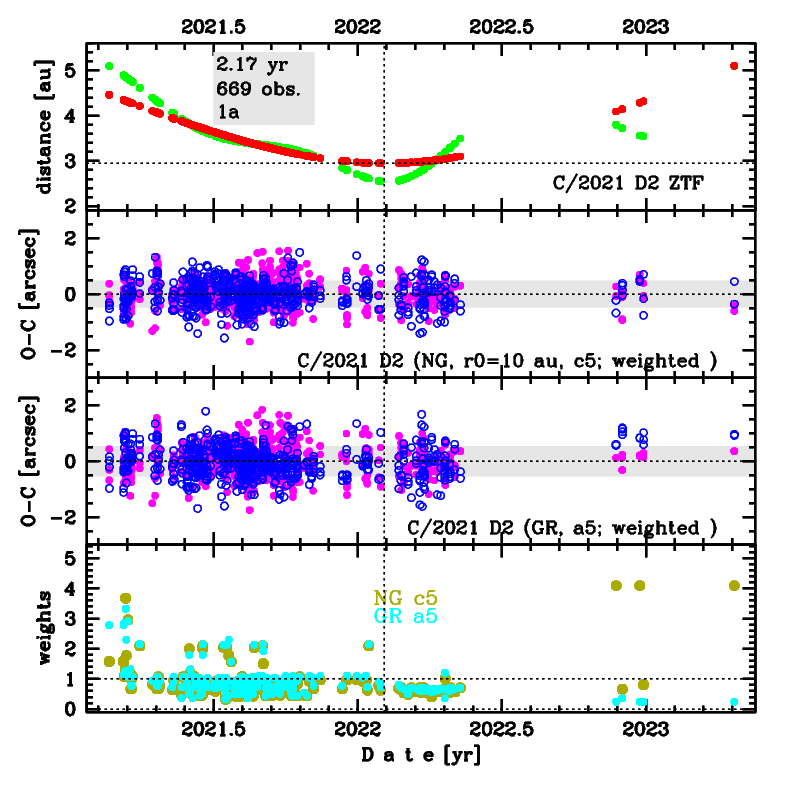C/2021 D2 ZTF
more info
Comet C/2021 D2 was discovered on 19 February 2021 by Palomar Mountain--ZTF, that is almost a year before its perihelion passage.
Comet had its closest approach to the Earth on 7 February 2022 (2.54 au), about four days after its perihelion passage.
The preferred NG solution given here is based on data span over 2.17 yr in a range of heliocentric distances: 4.46 au – 2.95 au (perihelion) – 5.10 au.
This Oort spike comet suffers small planetary perturbations during its passage through the planetary system that lead to escape the comet from the planetary zone on a hyperbolic orbit (see future barycentric orbits).
Comet had its closest approach to the Earth on 7 February 2022 (2.54 au), about four days after its perihelion passage.
The preferred NG solution given here is based on data span over 2.17 yr in a range of heliocentric distances: 4.46 au – 2.95 au (perihelion) – 5.10 au.
This Oort spike comet suffers small planetary perturbations during its passage through the planetary system that lead to escape the comet from the planetary zone on a hyperbolic orbit (see future barycentric orbits).
| solution description | ||
|---|---|---|
| number of observations | 669 | |
| data interval | 2021 02 19 – 2023 04 22 | |
| data type | perihelion within the observation arc (FULL) | |
| data arc selection | entire data set (STD) | |
| range of heliocentric distances | 4.46 au – 2.95 au (perihelion) – 5.1 au | |
| detectability of NG effects in the comet's motion | comet with determinable NG~orbit | |
| type of model of motion | GR - gravitational orbit | |
| data weighting | YES | |
| number of residuals | 1321 | |
| RMS [arcseconds] | 0.54 | |
| orbit quality class | 1a+ | |
| orbital elements (heliocentric ecliptic J2000) | ||
|---|---|---|
| Epoch | 2022 01 21 | |
| perihelion date | 2022 02 03.97847176 | ± 0.00022095 |
| perihelion distance [au] | 2.94632095 | ± 0.00000164 |
| eccentricity | 1.00144396 | ± 0.00000196 |
| argument of perihelion [°] | 125.029028 | ± 0.000060 |
| ascending node [°] | 305.678632 | ± 0.000017 |
| inclination [°] | 83.830731 | ± 0.000007 |
| reciprocal semi-major axis [10-6 au-1] | -490.09 | ± 0.67 |
